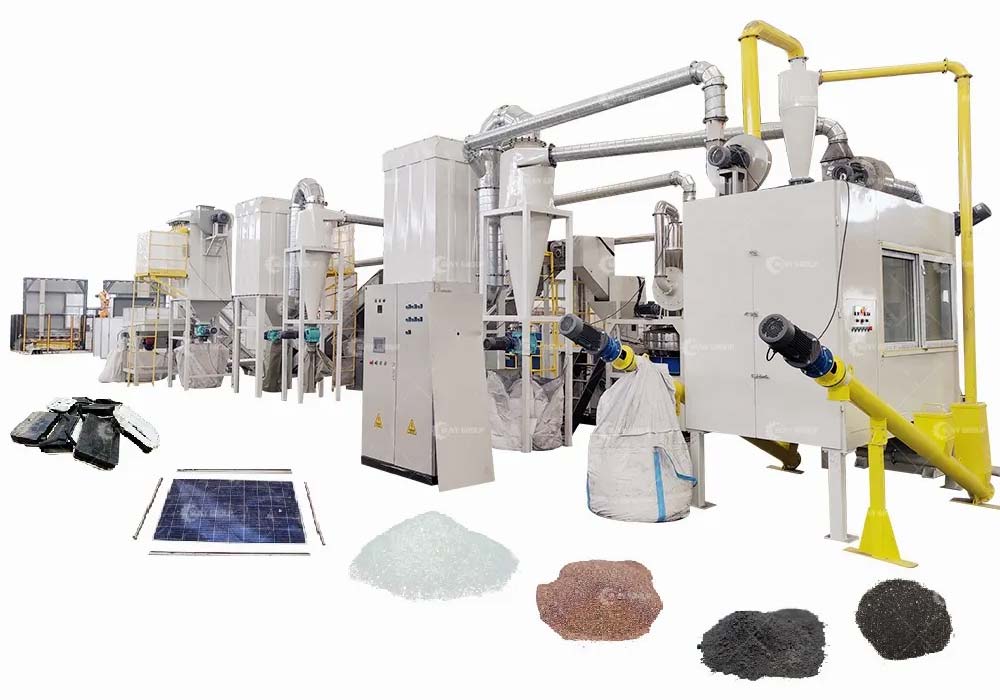With the rapid development of the photovoltaic industry, the recycling of retired components has become the key to the sustainable development of the industry. Efficient photovoltaic recycling lines can not only reduce environmental pollution, but also realize resource recycling and promote green economy.
1. Recycling line equipment configuration
The photovoltaic recycling line uses intelligent equipment, including automatic disassembly machines, pyrolysis furnaces, crushing and sorting systems, and chemical purification devices. Among them, the pyrolysis furnace can decompose the EVA film at 500°C to separate glass, silicon wafers and metals; optical sorters and electrostatic sorters can accurately identify different materials and improve the recycling purity; hydrometallurgical technology is used to extract high-value metals such as silver and copper.

2. Workflow: Efficient step-by-step processing
The recycling process is divided into four stages:
Pretreatment: remove easily removable parts such as aluminum frames and junction boxes;
Pyrolysis separation: heat and decompose laminated materials to separate glass, silicon wafers and backplanes;
Crushing and sorting: after mechanical crushing, use physical methods (magnetic separation, wind separation) to separate metal and silicon materials;
Chemical purification: purify silicon and precious metals through acid leaching, electrolysis and other methods to meet recycling standards.
3. Environmental protection improvement: reduce pollution and promote recycling
Traditional landfill methods will pollute the soil, while modern recycling technology can reduce waste emissions by more than 90%. Waste gas treatment systems (such as activated carbon adsorption) can effectively control VOCs, and wastewater can be recycled after purification. In addition, every ton of photovoltaic modules recycled can reduce carbon emissions by about 1.2 tons, helping to achieve the goal of carbon neutrality.
4. Economic benefits: resource regeneration creates value
Photovoltaic recycling has significant economic potential. The recycling of materials such as silicon, silver, and copper can reduce the production cost of new modules by 15%-20%. It is estimated that by 2030, the global photovoltaic recycling market will exceed US$27 billion, becoming an important growth point in the new energy industry chain.
5. Future Outlook: Dual Drive of Policy and Technology
Policies of various countries (such as the EU WEEE Directive and China's 14th Five-Year Plan) are promoting mandatory recycling standards. In the future, new technologies such as AI sorting and low-temperature degumming will further improve recycling efficiency, and the closed-loop model of "photovoltaic manufacturing-recycling-reuse" will accelerate the green transformation of the industry.
Photovoltaic recycling is not only an environmental protection demand, but also an economic opportunity. With technological progress and large-scale application, the photovoltaic industry will achieve true sustainable development and provide solid support for global energy transformation.
Thank you for your interest in suny group. If you want to learn more about our E-waste recycling plant, copper wire recycling machine and other machines, Contact us now to find out what we can do for you next project!E-mail:sunymachine@gmail.com | Whatsapp:+8613674945231